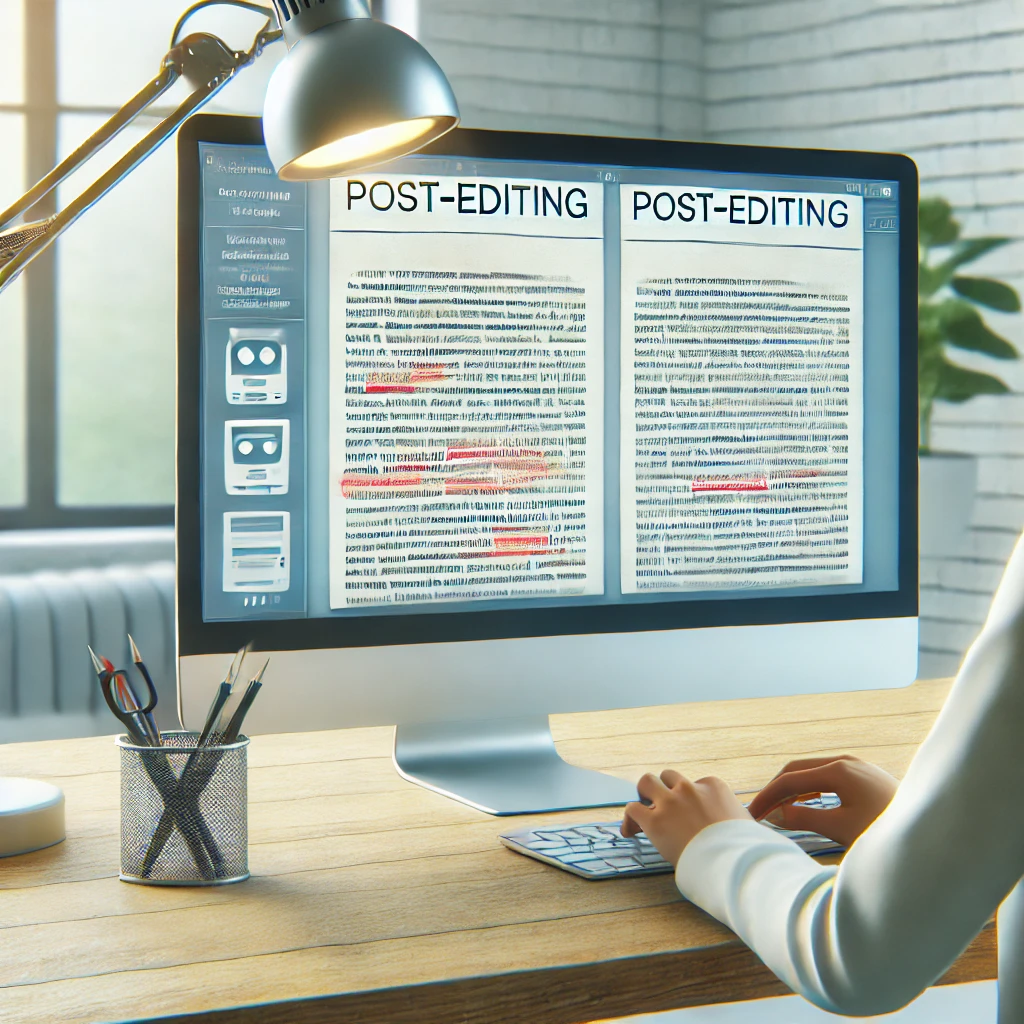Post-editing in translation is the process of refining and correcting machine-generated translations. Unlike traditional human translation, where a linguist translates content from scratch, post-editing focuses on editing and improving output from machine translation tools. This process aims to bring the translation to a level of quality that meets the client’s needs, whether that’s “good enough” for basic comprehension or polished for professional publishing.
Why is Post-Editing Necessary?
While machine translation has become more sophisticated, particularly with the advent of neural machine translation (NMT), it still struggles with nuances, cultural context, and the accuracy of complex texts. Post-editing fills these gaps by providing a human check, ensuring that the final translation is both accurate and contextually appropriate.
Types of Post-Editing in Translation
Light Post-Editing
Light post-editing is often sufficient for content meant for internal or informal use. Here, the focus is on ensuring the translation is understandable and that there are no glaring errors, rather than achieving stylistic perfection. This approach is common in scenarios where speed is prioritized over detail, such as in customer support or technical documentation.
Example: A company needing quick translations for internal documentation might opt for light post-editing to save time and cost.
Full Post-Editing
In contrast, full post-editing aims for the highest quality, ensuring the translation meets all grammatical, stylistic, and terminological standards. This approach is ideal for content intended for public or professional use, such as marketing materials, contracts, or legal documents. Full post-editing requires in-depth review and often involves consulting translation memory (TM) systems to ensure consistency.
Example: A global brand launching a new product might require full post-editing to align messaging with its brand voice and cultural nuances.
Benefits of Post-Editing Machine-Translated Content
Incorporating post-editing into the translation workflow automation brings several advantages to companies and individuals, particularly in terms of quality control and cost-effectiveness.
Enhanced Translation Quality
By leveraging both machine and human expertise, post-editing ensures that translations are accurate, contextually relevant, and linguistically polished. This combination is especially valuable in sectors like healthcare, legal, and finance, where precision is non-negotiable.
Improved Efficiency
With machine translation handling the bulk of the initial workload, post-editing saves time compared to traditional human-only translation. This efficiency can be critical in industries that require high-volume translation under tight deadlines.
Cost Savings
For companies that frequently require translations, post-editing offers a cost-effective solution. MTPE (Machine Translation Post-Editing) minimizes the need for entirely human translation, which can reduce expenses without sacrificing quality.
The Process of Post-Editing Translation
Post-editing is more than a mere edit; it’s a meticulous process that involves several stages, ensuring each translation meets client expectations. Here’s a typical breakdown:
1. Initial Review and Assessment
The post-editor first reviews the machine-generated translation to gauge its quality and identify sections that need more substantial correction. This step provides an overview of the translation quality and helps the editor strategize their approach.
2. Correction and Refinement
This stage is where the main editing occurs. The post-editor corrects grammar, syntax, and terminology, adjusting the translation to ensure accuracy. They also consider linguistic post-editing needs, such as adapting idioms, cultural references, and stylistic elements.
3. Quality Assurance and Final Review
Once the edits are complete, a final review ensures that all corrections align with the client’s style guide and that the translation flows naturally. This quality check often includes proofreading, formatting adjustments, and sometimes even translation accuracy testing.
How Post-Editing Improves Translation Quality
As translation technology evolves, so do expectations for quality. Here’s how post-editing contributes to better outcomes:
Reduces Errors: Machine translations, while improving, often contain inaccuracies due to language complexity. Post-editing corrects these issues, providing translations with fewer errors.
Enhances Readability: Human review ensures that the translation is not only accurate but also flows well, making it easier for readers to understand.
Cultural Sensitivity: Machine translations often miss cultural subtleties. Post-editors bring this sensitivity into the final product, adapting phrases and idioms for the target audience.
Human vs. Machine Post-Editing in Translation
The question of human vs. machine post-editing is complex. While machine learning has made strides, the precision and cultural understanding that human post-editors bring remain essential. Automated tools can accelerate the process but lack the adaptability and nuanced understanding of a skilled human.
In practice, a hybrid approach is emerging, combining human insight with AI-driven suggestions. By using language service providers (LSPs) that offer both options, companies can choose the level of human oversight that suits their needs.
Conclusion
Post-editing has become a cornerstone of modern translation services, bridging the gap between raw machine output and polished, human-quality content. From light post-editing to full post-editing, the scope of this process allows for flexibility, cost savings, and efficiency, making it invaluable in today’s globalized world.


